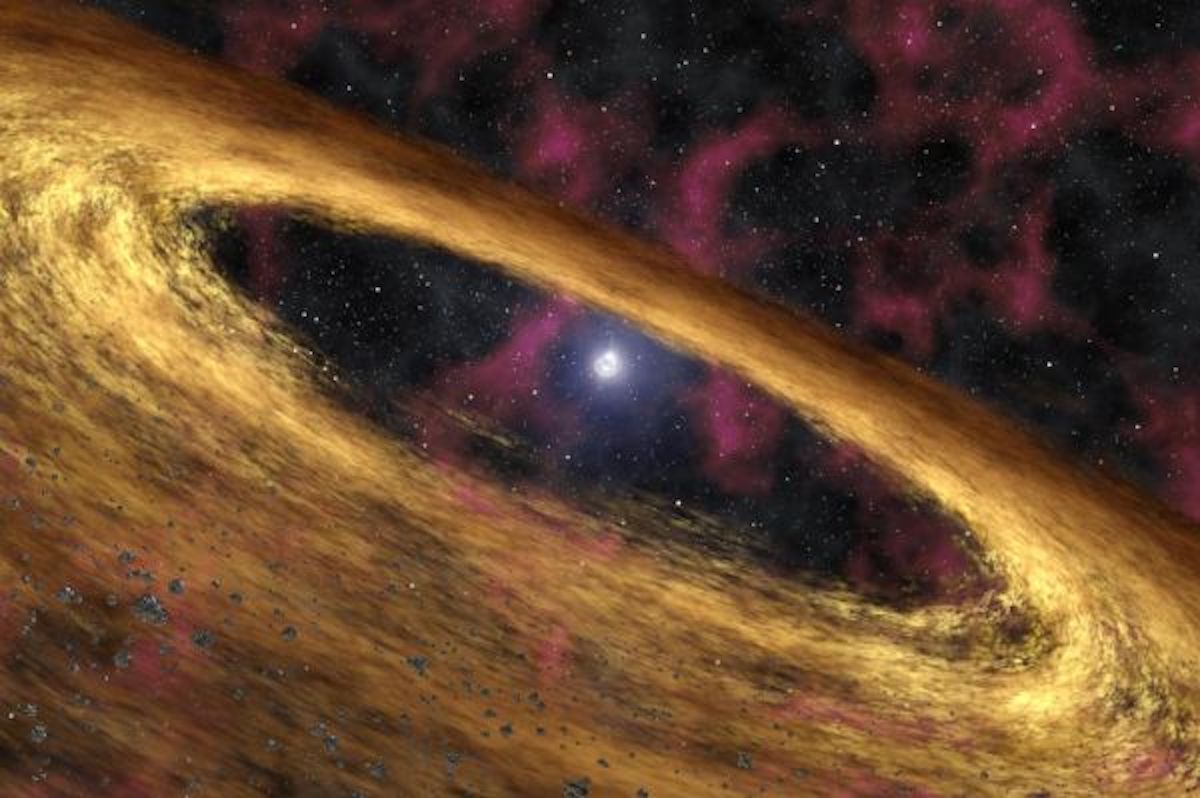
Astronomers have identified a new kind of pulsar that consumes an orbiting companion, filling in a missing link about how some of the strangest systems in the universe evolve.
Astronomers found their first "black widow" system, named PSR B1957+20, in 1988. It consisted of a single pulsar with a small orbiting companion. This was not an unusual setup for pulsars, which are rapidly spinning neutron stars (the collapsed cores of stars that die in supernova explosions) that emit pulses of radiation at regular intervals. Indeed, many pulsars come in pairs. What was unusual about this system, however, was the presence of a significant amount of energetic material surrounding the pair.
The astronomers realized that the material surrounding the system came from the small companion and that, at one time, the companion was much larger. But the pulsar in the center was blasting out streams of extremely energetic radiation and particles. These blasts were so powerful that they were carving off pieces of the orbiting companion and shoving them out into space. Essentially, the pulsar was eating its companion alive, hence the "black widow" nickname, a reference to the spider that eats its mate.
Since then, astronomers have discovered several other pulsar systems that fit into the "spider" family. Technically, black widows have companions with very small masses, usually less than one-tenth the mass of the sun. Other systems include "redback" pulsars, which are actively destroying companions with masses up to half a solar mass. And "huntsman" pulsars have companions with enough mass to withstand the outbursts, and so those systems have much less material around them.
Related: Scientists spot 1st gamma-ray eclipses from strange 'spider' star systems
A deadly dance
While astronomers have identified dozens of these "spider" systems, they have had difficulty explaining how the systems came to be. The problem is that ablation, the process of reducing a companion's mass by removing its outer layers via powerful radiation bursts, is a relatively inefficient process. It's too slow to explain how those companions can lose so much mass in such a short amount of time.
Now, a team of astronomers has proposed a solution by finding two systems that they believe provide an evolutionary link between normal binary systems and more evolved "spider" systems. They reported their results in January in the journal Monthly Notices of the Royal Astronomical Society.
Initially in the evolution of a binary system, there are simply two stars orbiting each other. But one will inevitably be more massive than the other and will end its life sooner. If the star is massive enough, it will become a neutron star, the remnant core of compressed neutrons left over after a supernova explosion.
If the remaining companion has a low enough mass, the system will soon become what is dubbed a low-mass X-ray binary. In these systems, the companion has begun to overflow, either because it naturally swells as it enters the red giant stage, or because the extreme gravity of the neutron star pulls on its atmosphere. Either way, in this stage, the companion begins spilling its material onto the neutron star, causing it to speed up and flash in X-ray radiation.
Astronomers have long believed that these low-mass X-ray binary systems occasionally developed into black widow or redback spider systems, but the link has not been shown until now.
Related: Rare 'black widow' star system could help unlock the secrets of space-time

Becoming a widow
The astronomers behind the study investigated two low-mass X-ray binary systems, named Swift J1858.6-0814 and EXO 0748-676. These two systems contain all the features of typical low-mass X-ray binaries: a neutron star with a small, overflowing companion.
But the researchers also found evidence for ablation, with highly energized material surrounding each pair. Their observations suggest that the "spider" phase may have already begun early on in the development of these systems. Even though ablation is inefficient, by pushing away material from the companion with strong outbursts early on, these systems had plenty of time to blow away enough gas to explain the spider system results.
The researchers dubbed these systems "false widows," adding to the arachnid-based classification scheme. Eventually, these false widows will evolve into true black widow and redback systems, and those systems, too, won't last forever. At some point, the companion will run out of material altogether, with all of its atmosphere either blown out into space or transferred onto the neutron star. That transfer causes a tremendous speed-up in the rotation rate of the neutron star, causing it to spin thousands of times every second.
With the new observations, the entire developmental process is clear: Binary systems emerge, then become low-mass X-ray binaries, then false widows, then black widow or redback systems, before finally settling down as millisecond pulsars.
Follow us on Twitter @Spacedotcom and on Facebook.







